Libby Fischer Hellmann's Blog, page 18
March 7, 2016
Can You Revive A Series A Decade Later?
I try to answer that on the Kobo Writing Life blog today. Let me know what you think…
Posted on March 7, 2016 by Kobo Writing Life One comment

By Libby Fischer Hellmann
My latest thriller, Jump Cut, is the fifth Ellie Foreman mystery, and it’s been ten years since the fourth one came out. Ellie will tell you she’s been on an extended vacation, but I wasn’t so sure. I had to evaluate whether it was possible to bring back a series, a lead character, and her “supporting cast” after so long. Obviously, I went for it; here is some of my thinking.
The Benefits
On the positive side, bringing Ellie back was like reconnecting with an old friend. I quickly rediscovered Ellie’s voice, and the writing was familiar, even easy, something for which I was grateful. Despite the passage of time, she’s still essentially the same person: producing videos, interested in the world, worrying about her family. She still has a self-deprecating sense of humor and the need to see justice done that can put her in dangerous situations. At the same time, however, she has matured. Which surprised both of us. She is unwilling to take the same risks she did in previous novels, and she’s doesn’t act as impulsively. She tends to think things through. I hadn’t expected that.
The post Can You Revive A Series A Decade Later? appeared first on .
March 6, 2016
Publishing in Cuba: Baby Steps
“We have made new friends, fostered business relationships, have fantastic memories, and were a part of history that will forever be a chapter in the publishing industry.” World Book International director Kristin Norell on the Havana Book Fair.
Cuba’s publishing scene in 2012
 I visited Cuba in February, 2012, and went to the Havana Book Fair, which, btw, is the largest in all of Latin America. While there, I listened to several people in the Cuban publishing industry (such as it was) and blogged about it here and here. At that point the country’s book selling sector was almost wholly state-controlled. You were fine if you wanted to digest heavy political stuff like 100 Hours with Fidel, a ridiculously long interview with Fidel Castro, or Che Guevara’s Bolivian diary. But anyone wanting to broaden their literary scope faced difficulties.
I visited Cuba in February, 2012, and went to the Havana Book Fair, which, btw, is the largest in all of Latin America. While there, I listened to several people in the Cuban publishing industry (such as it was) and blogged about it here and here. At that point the country’s book selling sector was almost wholly state-controlled. You were fine if you wanted to digest heavy political stuff like 100 Hours with Fidel, a ridiculously long interview with Fidel Castro, or Che Guevara’s Bolivian diary. But anyone wanting to broaden their literary scope faced difficulties.
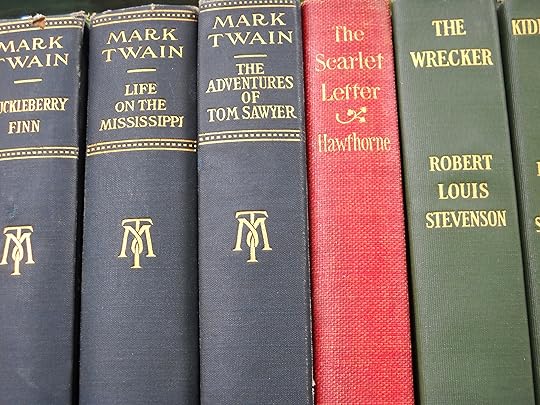 A year later, change began to percolate around the edges. Books were sent into Cuba by post, and tourists left them behind in hotel rooms. There were a few independent bookstores, but most literature toed the political line. You couldn’t buy books by exiled authors, nor work by respected Latin American writers like Mario Vargas Llosa. The Cuban government, afraid of jeopardizing the Revolution, kept the publishing scene under its political thumb. The US embargo didn’t help, with Cuban publishers finding it almost impossible to sell books abroad. Important voices like Yoani Sanchez were able to publish blogs, but she was forced to use a circuitous route and unreliable internet connections to get her posts out.
A year later, change began to percolate around the edges. Books were sent into Cuba by post, and tourists left them behind in hotel rooms. There were a few independent bookstores, but most literature toed the political line. You couldn’t buy books by exiled authors, nor work by respected Latin American writers like Mario Vargas Llosa. The Cuban government, afraid of jeopardizing the Revolution, kept the publishing scene under its political thumb. The US embargo didn’t help, with Cuban publishers finding it almost impossible to sell books abroad. Important voices like Yoani Sanchez were able to publish blogs, but she was forced to use a circuitous route and unreliable internet connections to get her posts out.
A literary thaw
Washington and Havana started restoring diplomatic ties last July, when the US relaxed travel and trade restrictions after the 54 year long Cold War freeze. President Obama is set to take more steps towards warming the relationship on March 21st 2016, when he and the First Lady will visit Havana in a continuing effort to ‘engage and empower’ the Cuban people. He’ll be the first American president to visit Cuba since Coolidge in 1928.
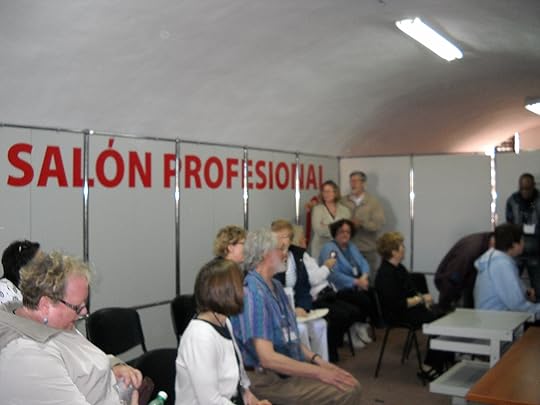 And last month US and Cuban publishers met at the Book Fair to establish mutually beneficial relationships and ‘normal business relations’ at this year’s Havana Book Fair.
And last month US and Cuban publishers met at the Book Fair to establish mutually beneficial relationships and ‘normal business relations’ at this year’s Havana Book Fair.
Publishers Weekly and Combined Book Exhibit were at the controls of this groundbreaking collaboration, which saw 37 American publishers and distributors showcasing a total of 600 books, from novels and educational books to children’s books, academic tomes, graphic novels, history books, and more. Several Cuba-born Americans, including the respected Miami bookseller Raquel Rogue and People en Espanol ‘s Armando Correa, joined in, returning to the country of their birth for the first time in decades. And there were two days’ worth of professional panel events, where people freely discussed the Cuban and American publishing industries.
The end result was a signed memorandum of understanding from Publishers Weekly, Combined Book Exhibit and the Cuban Book Institute, the organization tasked with overseeing the country’s state-run publishers. The memorandum states all those involved will work to, “to promote cooperation and understanding between the United States of America and Cuba in the publishing field.”
What does it mean?
All this means there will be a US presence at future Havana Book Fairs. It also means Cuban book publishers will be visiting BookExpo America in 2016, held in Chicago, which has already donated exhibition space to the CBI.
All this contributes to increasing calls for an early end to the trade embargo that has plagued our two countries for decades and remains the biggest barrier to any kind of meaningful commercial relationship. Mark Coker, the CEO of Smashwords, has already started organizing the US publishing sector to petition for the embargo to be lifted, and more ideas for collaboration are on the table. A May meeting in New York is planned too, tipped to “create the conditions” for projects the two nations’ publishers want to carry out.
Reading has no boundaries, a love of books has no boundaries, and literature transcends politics. With luck the flood gates will open sooner rather than later, bringing a wealth of extra reading pleasure to people in the USA and Cuba.
I’ll give Zuleica Romay Guerra, president of the Cuban Book Institute, the last word: “We want Cuban classics translated into English. We want the best of American literature, and we want the best of Cuban literature to be visible and known in the US.”
Yes please!
The post Publishing in Cuba: Baby Steps appeared first on .
February 26, 2016
Girl Heroes Shatter The Literary Glass Ceiling
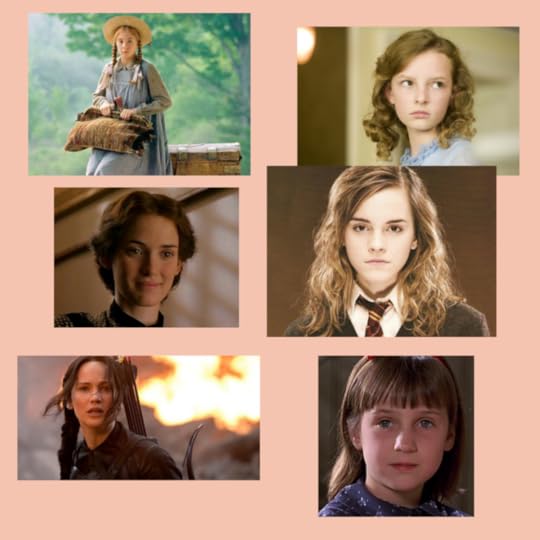 World Book Day is an annual event organized by UNESCO during March or April, depending where you live. It’s designed to be a global celebration of everything to do with books and reading.
World Book Day is an annual event organized by UNESCO during March or April, depending where you live. It’s designed to be a global celebration of everything to do with books and reading.
Prior to this year’s celebrations, a poll of memorable children’s novel characters, created to mark the big day, saw female heroines and villains wipe the board. Seven thousand young voters awarded six of the top ten hero and heroine spots to female characters. Which made me wonder.
World Book Day is marked in more than 100 countries, so the results of the poll speak volumes. The six top ten ‘heroes and villains’ are Harry Potter’s Hermione Granger, Katniss Everdeen from The Hunger Games, Roald Dahl’s Matilda Wormwood, Lyra Belacqua from Philip Pullman’s His Dark Materials series, Jo March from Louisa May Alcott’s Little Women, and Anne Shirley from Anne of Green Gables.
An emerging pattern – Admiration for powerful women
Aside from the predominace of women itself, it’s interesting to see the kind of females that attract young readers most. There isn’t a shrinking violet among them.
Katniss Everdeen is powerful, strong, fierce and determined. Jo March is a rebel of her own time, a tomboy when women were supposed to be decorative. Matilda is wickedly naughty and rude, with a strong sense of self-preservation, at war with the weird world of grown-ups. Feisty Anne Shirley is a bright, enthusiastic, rebellious flame in a dull and conventional world. Harry Potter’s friend Hermione Granger transforms from a shy and bookish girl to a heroine to reckon with. And Lyra Belacua comfortably inhabits a violent parallel universe, engaged in a cosmic war.
Is this where all the female thriller authors are?
In a recent post I asked where are all the female thriller authors are. Maybe the results of this poll provide a clue. Perhaps it’s a generational thing. Now that so many kids’ heroes are women, has a fundamental literary gender barrier been broken? Because female characters are equally able to do cool stuff like chop monsters’ heads off, fight inter-galactic battles, and save worlds, will there eventually be more female heroes across the board?
Why the difference?
Then again, I wonder if it’s just because girls tend to read more than boys. It’d be interesting to know how the gender of the children was split male/female, and whether boys voted for male heroes and villains, girls for female, or an even spread.
If it’s simply a matter of girls reading more than boys, why the difference? I’ll go into that next time. For now, though, it’s cause to celebrate. Girl Heroes seem to be shattering the Literary Glass Ceiling.
The post Girl Heroes Shatter The Literary Glass Ceiling appeared first on .
February 23, 2016
Sharing A Bit Of Jump Cut
I have a favor to ask. A couple of months ago I asked my Review Crew to tell me which lines in Jump Cut they thought were worth remembering. They came up with four, which are below.
Would you help share these quotes and images with YOUR followers and friends? All you do is hover over the images you want to share. A red box will pop up on the lower right with 3 social media platforms. Click on the appropriate one and add a caption, if you want. Or not. That’s all there is to it.
Thanks so much for being part of the process– Color me grateful.
Share to Facebook and Twitter

Share to Pinterest

Share to Facebook and Twitter

Share to Pinterest

Share to Facebook and Twitter

Share to Pinterest

Share to Facebook and Twitter

Share to Pinterest

Thanks again!
The post Sharing A Bit Of Jump Cut appeared first on .
February 22, 2016
A Tour of Jump Cut
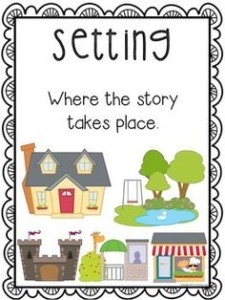
Thought you might be interested in a video tour of some of the locations I’ve used in Jump Cut, which comes out next week. The settings range from Ellie Foreman’s hang-outs on the North Shore of Chicago, Lake Geneva, Wi, as well as some locations in downtown Chicago. Enjoy!
So… what do you think?
The post A Tour of Jump Cut appeared first on .
Launching A New Series Thriller 10 Years Later
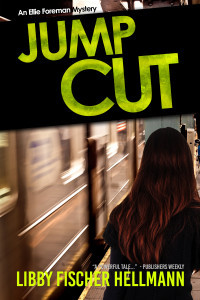 Hi, all. I was interviewed by Stephen Campbell recently about what I’ve been doing to launch JUMP CUT, the 5th installment of my Ellie Foreman mysteries (Thrillers really), and the first one in ten years. I hope you find it useful… maybe even entertaining. Listening to myself, I am reminded how exhausted I am. In fact, I feel like I’m 9 months pregnant and have come to the point where I just want the damn thing OUT.
Hi, all. I was interviewed by Stephen Campbell recently about what I’ve been doing to launch JUMP CUT, the 5th installment of my Ellie Foreman mysteries (Thrillers really), and the first one in ten years. I hope you find it useful… maybe even entertaining. Listening to myself, I am reminded how exhausted I am. In fact, I feel like I’m 9 months pregnant and have come to the point where I just want the damn thing OUT.
Hope you enjoy.
Here’s another blogpost you might like:
“Writing Crime Fiction Ten Years Later”
The post Launching A New Series Thriller 10 Years Later appeared first on .
February 18, 2016
What’s Cook-ing with Apple’s iPhone Rebellion
Remember the first commercial for the Mac? Called “1984,” it was directed by Ridley Scott and starred the English athlete Anya Major. The concept, ‘saving humanity from conformity’, alluded to George Orwell’s novel of the same name.
This week, Apple CEO Tim Cook stoked the embers of the company’s erstwhile image by refusing FBI demands to unlock an iPhone linked to the recent San Bernardino terrorist attack so the FBI can find out who Syed Rizwan Farook might have talked to. Apple’s refusal has all the earmarks of a tech company playing the hero: safeguarding the privacy of zillions of customers in the face of a federal law enforcement agency acting under the guise of national security.
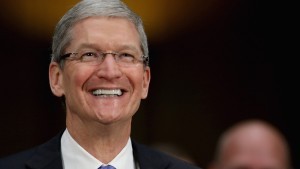 “We have great respect for the professionals at the FBI,” Cook said, “and we believe their intentions are good. Up to this point, we have done everything that is both within our power and within the law to help them. But now the US government has asked us for something we simply do not have, and something we consider too dangerous to create. They have asked us to build a backdoor to the iPhone.”
“We have great respect for the professionals at the FBI,” Cook said, “and we believe their intentions are good. Up to this point, we have done everything that is both within our power and within the law to help them. But now the US government has asked us for something we simply do not have, and something we consider too dangerous to create. They have asked us to build a backdoor to the iPhone.”
“Once created, the technique could be used over and over again, on any number of devices. In the physical world, it would be the equivalent of a master key, capable of opening hundreds of millions of locks — from restaurants and banks to stores and homes. No reasonable person would find that acceptable.”
Okay. I get it. Except… that Apple has cooperated with law enforcement in the past. The Daily Beast reports that the tech giant has unlocked phones at least 70 times since 2008. And while, this time, the technical assistance needed is more complex, it’s fair to question whether Cook’s position is genuine or just a PR ploy designed to please and/or appease the public.
Perhaps Apple has no real intention of refusing the FBI, displaying a rebellious public posture to ensure stronger restrictions on the use of the technology they will ultimately give the Feds. Or maybe they’re making their stand so that when the government forces their hand, as they inevitably will, Apple will look like the white hats at the expense of the sinister black government hats. Or maybe I’m wrong and Apple really is that woman running through the crowd of gray uniforms.
The confrontation deepens
Whatever Apple’s motivations, within twenty-four hours the embers Cook stoked become a roaring fire. Privacy advocates and tech companies, including Google, Microsoft, and, in a round about way Amazon () are showing their support for Apple. On the other side, a host of former and current CIA, FBI officers, and other intelligence officials are quick to denounce them.
The FBI wants Apple to disable the iPhone feature designed to wipe data after ten unsuccessful password attempts, so that the FBI can test billions of passwords without any data being deleted. But Apple says it can’t unlock its newer iPhones because they don’t store decryption keys. Only the user, or someone else who knows the password, can unlock the device. Tech experts concur, but US Magistrate Judge Sheri Pym countered by saying Apple can ‘write software’ to bypass the feature.
FBI Supervisory Special Agent Christopher Pluhar already has much of Farook’s data that was backed up in the cloud. The agency confirmed that the terrorist in question, Farook, was communicating with suspect individuals. But Pluhar also thinks the terrorist may have intentionally disabled the backup feature, and there might still be, “relevant, critical communications and data” on the phone from the days and hours just prior to the attack that would be very useful.
But former National Counterterrorism Center director, Matt Olsen, says the government has alternative ways to get the data it wants. In his opinion there’s no need for a dangerous ‘backdoor’ into the iPhone. Still, having said that, he thinks this is a special case. Then he’s also an ex-general counsel at the NSA…
Kevin Bankston, the director of New America’s Open Technology Institute, thinks it’s crazy for any business to do what the Feds are asking of Apple: “custom-build malware to undermine its own product’s security features.” He’s also unsure whether it’s even technically possible. Nate Cardozo, a staff attorney with the Electronic Frontier Foundation believes the government already has what it needs to unlock the phone and says “They chose this case because they want precedent that they can order a company to design a particular feature at their whim,” he said, noting no court has ever approved an order this broad.
The FBI responds that this is one phone of one man, not a movement or technology that will be publicly revealed.
At the moment, it’s a Mexican standoff, but the confrontation is bound to deepen over time in court. I suppose we shouldn’t be surprised. The debate about privacy and security has never been resolved, and quite possibly never will be. And every event that gives rise to the debate seems to raise the stakes is like a lit match thrown on a bale of straw.
Repercussions
If Apple gives in to the FBI it could affect much more than the iPhone. Governments, hackers, and froeign spies might end up doing the same with every piece of software, every gadget we use. (Although it’s unclear how so many hackers would get their hands on them)
If Apple caves, moreover, it could be a huge challenge to crack a password that contains more than just a few numbers and letters. It could easily take a decade to crack a strong password, with results unavailable until 2026 (although other tech experts disagree.) Still, is it realistic, useful, worth the investment, or – most of all – worth sacrificing our personal privacy?
In Kevin Bankston’s words, “If this precedent gets set it will spell digital disaster for the trustworthiness of everyone’s computers and mobile phones.” Ahmed Ghappour, professor at the University of California’s Hastings College of the Law, rounds the argument off with a warning. “If the writ can compel Apple to write customized software to unlock a phone, where does it end? Can the government use it to compel Facebook to customize an algorithm that predicts crime? It’s not clear where the line will be drawn, if at all.”
Yes, Jump Cut
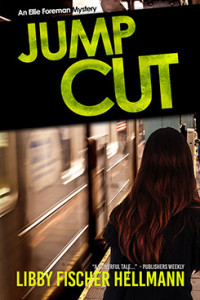 Conveniently or maybe not, the debate between privacy and security is at the heart of my upcoming thriller, Jump Cut, which comes out March 1. And it remains unresolved at the end of the book. But we may get some insight into the Bureau’s position soon. As many of you know, I host a monthly radio show, and I have invited an FBI official to talk about some of the issues, including corporate espionage and encryption, that are raised in Jump Cut. Deputy Assistant Director Robert Jones of the DBI’s CounterIntelligence will be joining me on Second Sunday Crime at 6 PM CST Sunday March 13. It’s bound to be a fascinating discussion, so I might move the air date up a week, with such a timely subject on out hands.
Conveniently or maybe not, the debate between privacy and security is at the heart of my upcoming thriller, Jump Cut, which comes out March 1. And it remains unresolved at the end of the book. But we may get some insight into the Bureau’s position soon. As many of you know, I host a monthly radio show, and I have invited an FBI official to talk about some of the issues, including corporate espionage and encryption, that are raised in Jump Cut. Deputy Assistant Director Robert Jones of the DBI’s CounterIntelligence will be joining me on Second Sunday Crime at 6 PM CST Sunday March 13. It’s bound to be a fascinating discussion, so I might move the air date up a week, with such a timely subject on out hands.
I’ll let you know here and elsewhere on the internet exactly when and where it will air. Given the events of the past week, I can’t wait. I hope you can’t either.
The post What’s Cook-ing with Apple’s iPhone Rebellion appeared first on .
February 15, 2016
Spy Fiction: Where Are All The Women Authors?
A couple of weeks ago, an article came out in The Big Thrill about espionage thrillers. It featured Gayle Lynds, who is one of the best espionage authors around — and yes, I am flattered that she enjoyed and blurbed Jump Cut. But that’s not the point. The article touched on an issue close to my heart, and probably the hearts of other female espionage authors as well:
But even today, with some of Lynds’ books, including her debut, Masquerade, making “best novel” lists and winning awards, spy fiction remains a male-dominated genre. A conundrum that even baffles Kahla, Lynds’s long-time editor.
“I could probably make up an answer that sounds all reasonable and logical—such as a predominantly older male audience that doesn’t read women writers—but frankly, that rings a little hollow,” he says. “It remains true that there are not many women who write espionage fiction, and I don’t know why.
I don’t know why, either. Other sub-genres of suspense, like the new so-called “domestic thrillers” spawned by Gillian Flynn and others are popular; crime thrillers are always a favorite, as is romantic suspense. Why not espionage thrillers? Is it because more background research is necessary? Because it involves a knowledge, or at least a curiosity about the levers of international power and how to manipulate them? Is it because women are habituated to read thrillers about the hearth and homeland rather than conspiracies and secrets?
Perhaps. The irony is that plenty of female spies are taking center stage these days in thrillers, but most of them are the creation of male authors. Nothing wrong with that, but I’d like to see more women writing and being noticed for their work in the field. I mentioned several female espionage authors two years ago in a blogpost, but with the launch of Jump Cut, which is already available in print, btw — it’s time to remind you again.
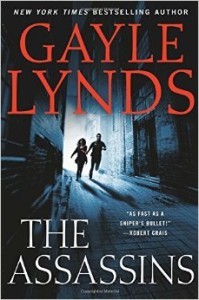 There’s Gayle Lynds, who cracked the genre’s mostly-male bias when the female president of a New York publishing house agreed to buy her debut spy thriller, Masquerade, then changed her mind because “No woman could have written this novel”. This was despite the fact that Lynds used to work at a Government think-tank and had Top Secret security clearance. She eventually found another publisher for Masquerade, which became an instant bestseller. Here’s a list of her books:
There’s Gayle Lynds, who cracked the genre’s mostly-male bias when the female president of a New York publishing house agreed to buy her debut spy thriller, Masquerade, then changed her mind because “No woman could have written this novel”. This was despite the fact that Lynds used to work at a Government think-tank and had Top Secret security clearance. She eventually found another publisher for Masquerade, which became an instant bestseller. Here’s a list of her books:
The Assassins (2014)
The Book of Spies (2010)
The Last Spymaster (2006)
The Coil (2004)
Mesmerized (2001)
Mosaic (1998)
Masquerade (1996)
There’s also Stella Rimington, the first ever Director General of MI5 who worked there between 1992 and ’96 and based her books on her experiences. And how about Leslie Silbert, a Harvard graduate whose debut novel The Intelligencer connects Christopher Marlowe’s 1500s spying with an international conspiracy set today? She works as a private investigator in New York, guided by a former CIA officer mentor.
There’s a debut author mentioned in the Big Thrill article:
Sonja Store will publish Desert Dark, a Young Adult espionage thriller about a 16-year-old girl who learns that the elite, government-funded boarding school she attends is actually a covert CIA program that trains high-achieving students for Black Ops.
And a comment on my first blog post mentioned Francine Mathews, a former CIA analyst. You can read an interview with her here.
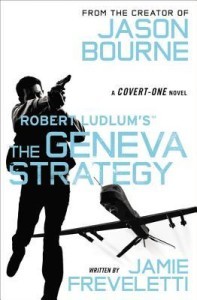 Thriller author Jamie Freveletti was chosen to continue the Robert Ludlum series by his estate and has penned several novels for them, and British author Zoe Sharp sometimes mixes espionage
Thriller author Jamie Freveletti was chosen to continue the Robert Ludlum series by his estate and has penned several novels for them, and British author Zoe Sharp sometimes mixes espionage 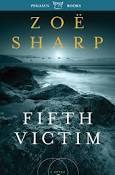 with her crime thrillers.
with her crime thrillers.
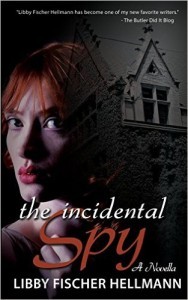 I’ve written a f
I’ve written a f ew stories about espionage as well, including The Incidental Spy and Jump Cut, but it says something that I’m having trouble finding other female authors who write spy novels.
ew stories about espionage as well, including The Incidental Spy and Jump Cut, but it says something that I’m having trouble finding other female authors who write spy novels.
What about your favorite espionage or spy novels? Especially those who were written by women? Who have I missed? And why are there so few?
The post Spy Fiction: Where Are All The Women Authors? appeared first on .
February 10, 2016
Love in a Politically Unstable Climate
 Few of us live in total isolation. Most of us love somebody, whether it’s a mother, father, children, relatives, or even a pet. I think when you write female characters as I do, love is a natural part of the plot. Which is why, in every book I’ve written, there is some allusion or reference to a man, or even another woman, to whom the protagonist is attracted.
Few of us live in total isolation. Most of us love somebody, whether it’s a mother, father, children, relatives, or even a pet. I think when you write female characters as I do, love is a natural part of the plot. Which is why, in every book I’ve written, there is some allusion or reference to a man, or even another woman, to whom the protagonist is attracted.
Of course, their relationships are never easy. The complex tangle of human emotions ties us in knots at the best of times. But what about when love blossoms in what Nancy Mitford called a “politically unstable climate?”
How politics, war, and class impact love
When the Berlin Wall went up, it separated husbands and wives, couples, sons and daughters, entire families who would never see each other in the flesh again. The Holocaust, too, separated families and blew them apart.
Loving the wrong person, on the wrong side of the political or cultural fence, can lead to lovers who are ostracized by their communities, thrown in jail, tortured, even killed. Falling for someone from the wrong caste, country, religion or social set can cause chaos as when a poor individual falls for a rich one, or a Jewish woman falls in love with a WASP, as in my new, favorite TV series, A Place to Call Home.
Even so, some lovers will do almost anything to be with the object of their desire. Political difficulties add extra spice to illicit meetings. Forbidden fruit has a powerful attraction. On the other hand, periods of extreme conflict or political strife can keep couples together who would have fallen apart in ordinary times.
How lovers react
Some star-crossed lovers give up and give in. Others rise to the challenges of political, cultural and social uncertainty. It’s human nature – we invariably want what we can’t have. And none of us like being told whom we should love.
In fact, danger can be a potent aphrodisiac. Frankie Pacelli, the protagonist of my thriller, Havana Lost, is the daughter of a mafia casino owner in Cuba. Frankie falls in love with a rebel fighting for Fidel Castro. She refuses to give him up and runs away to live with him and have his child. But in my Iranian thriller A Bitter Veil, Roya has been chosen by Nouri’s family for an arranged marriage. Unfortunately, Nouri inconveniently falls in love with Anna, an American, and Roya gives him up.
Romance under duress – My books
All this emotion adds texture and depth to a story, which is why there is always a love interest in my thrillers. Not that I write romance. But a person who loves or is forced to abandon a loved one can occasionally drive the plot, as it did in Havana Lost and A Bitter Veil. A love affair gone bad was also a major part of Set The Night On Fire, my third historical thriller. It’s also woven into my two series. Easy Innocence, the first Georgia Davis novel, begins with Georgia recovering from a break-up with former cop Matt Silver. That Matt subsequently becomes a major character in the story is no accident. And then there’s Jake Foreman, Ellie’s father, who had a grand passion for a German refugee who didn’t return it. Imagine how hard it was for Jake to fall in love with someone from a country whose wartime leaders were tearing the world apart.
The love for a child can be even more powerful, visceral and fierce. Take Ellie and her daughter Rachel. Despite her daughter’s rocky teen years, Ellie adores Rachel, and in Jump Cut, my upcoming thriller, it takes center stage. Love for siblings knows no bounds, as Georgia demonstrates in Nobody’s Child. And in An Image of Death, a sisterly love between two female characters persists through the entire book, despite almost insurmountable obstacles.
Heroes and Cowards
Extreme conflict, when it reaches the level of war, disaster, or revolution, brings out the extremes in people. Some people become heroes; others cowards. It does the same to people’s love lives. Under threat, everything is either more vivid and precious, or less solid and unreliable. Actions and reactions are exaggerated against the conflicted backdrop. Maybe that’s why, despite it being a terrible time, so many people claim that the build-up to and battles during World War Two were the happiest years of their lives – they felt vividly alive, in a way they never would have during peace. I intend to carry on the tradition.
Happy Valentine’s Day!
The post Love in a Politically Unstable Climate appeared first on .
February 5, 2016
5 Things That Should Always Happen in Thrillers
What makes a genre a genre? It’s more than plot. And characters. Take thrillers. At the heart of every good thriller there are at least five key elements that should be present. If you’ve ever read a lackluster, “low-fat” thriller that left you unsatisfied, it might have been missing one of these ingredients.
Put an ordinary person in an extraordinary situation
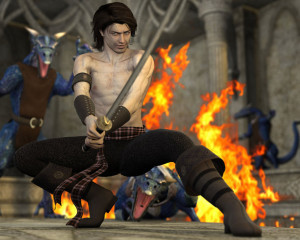 When you put an ordinary person in an extraordinary situation, sparks fly, and the unexpected and unlikely become possible, evn plausible. My three ‘revolution’ thrillers do exactly that, placing ordinary people in situations of extreme conflict, sometimes with no tools except their wits. The same goes for my two mystery series.
When you put an ordinary person in an extraordinary situation, sparks fly, and the unexpected and unlikely become possible, evn plausible. My three ‘revolution’ thrillers do exactly that, placing ordinary people in situations of extreme conflict, sometimes with no tools except their wits. The same goes for my two mystery series.
In my latest Ellie Foreman mystery-thriller, Jump Cut, Ellie is hurled into a nightmare world where she’s under surveillance and doesn’t know who to trust. In her search for answers, she ventures far too deep into the echelons of hidden power, which puts her loved ones in imminent danger. It’s an extraordinary situation, and she has to think and act quickly to resolve it without further harm.
Obstacles, hurdles and complications
There’s nothing thrilling about a straightforward plot where everything goes to plan. But when you place obstacles in a character’s path, and those obstacles cause delays, confusion, point them in the wrong direction, or even prove injurious, the stakes, and the suspense, climb sky high.
Hobbesian choices and worst case scenarios
 A Hobbesian choice—the choice between two equally unattractive alternatives—is another powerful tool that boosts the thrill factor. Being stuck between a rock and a hard place is always nasty. The horns of a dilemma are painfully sharp at the best of times, but when lives, futures, loves, morals, national security or survival are at stake, dilemmas take on a whole new dimension. Add a gnarly dilemma to a thriller and the resulting twists and turns transform a plot line.
A Hobbesian choice—the choice between two equally unattractive alternatives—is another powerful tool that boosts the thrill factor. Being stuck between a rock and a hard place is always nasty. The horns of a dilemma are painfully sharp at the best of times, but when lives, futures, loves, morals, national security or survival are at stake, dilemmas take on a whole new dimension. Add a gnarly dilemma to a thriller and the resulting twists and turns transform a plot line.
Just when you though it was safe… ! The same goes for the worst case scenario. As a reader, when you find yourself praying it won’t happen, then it does, the emotional rollercoaster ride can take your breath away. One my favorite wose-case scenarios occurs in Kent Krueger’s novel, Purgatory Ridge. Read the book and you’ll know right away which scene it is.
Issues of trust and loyalty
If you’ve ever been in a situation when you don’t know who is lying and who’s telling the truth, and have no idea who to trust, you’ll know how profoundly disturbing it is. Humans are social animals, and we wither without a network of trustworthy people on our side. Without it, a character can become super-vulnerable, angry, afraid, rebellious, and often dangerous. When we’re scared, we lash out. We make bad decisions. We don’t always behave well. All of which adds extra suspense.
Make It Impossible to Stop Reading
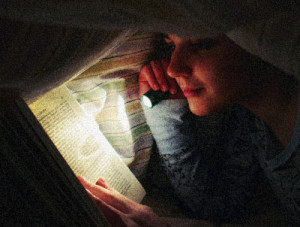 I use a hook at the beginning of chapters and a sting at the end, making every chapter a mini-plot in itself. It helps keep readers motivated and makes a book very hard to put down, a structure that I hope drives readers to stay up all night. It’s what TV series do, starting off episodes with an inspiring proposition or a mystery to resolve and ending them with a cliffhanger, leaving you gasping for the next one.
I use a hook at the beginning of chapters and a sting at the end, making every chapter a mini-plot in itself. It helps keep readers motivated and makes a book very hard to put down, a structure that I hope drives readers to stay up all night. It’s what TV series do, starting off episodes with an inspiring proposition or a mystery to resolve and ending them with a cliffhanger, leaving you gasping for the next one.
What makes the best thrillers of all?
So…what’s your favorite thriller of the past couple of years, and what made it more thrilling than the rest?
The post 5 Things That Should Always Happen in Thrillers appeared first on .



